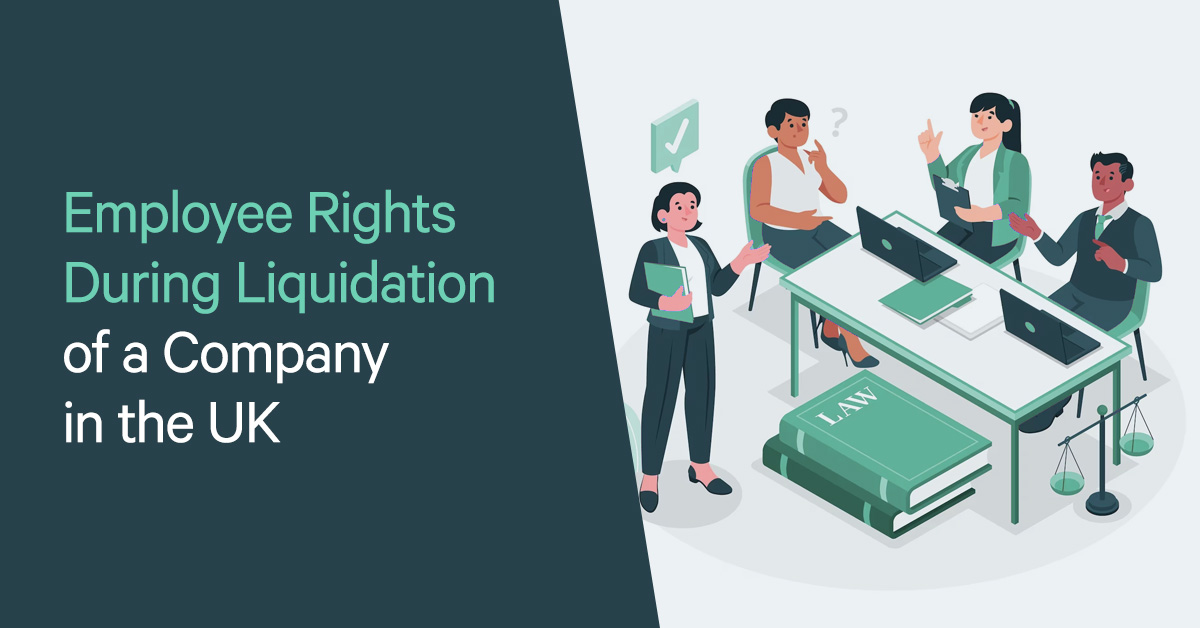If a Company Goes Into Administration, What Happens to Staff Payments and Redundancy? An Overview for Administration Staff
If a Company Goes Into Administration, What Happens to Staff Payments and Redundancy? An Overview for Administration Staff
Blog Article
Comprehending the Consequences of Company Liquidation on Staff Member Retention and Perks

Influence On Work Safety And Security
In case of business liquidation, the effect on job protection can be substantial for staff members as unpredictability concerning future employment arises. When a firm goes right into liquidation, workers encounter the overwhelming possibility of potential work loss. This unpredictability can cause increased tension and stress and anxiety among the labor force, impacting their spirits and performance.
During the liquidation procedure, workers might experience a range of emotions, consisting of irritation, rage, and fear, as they face the possibility of joblessness. The lack of clearness bordering the timeline of the liquidation and the fate of their placements can create a sense of instability within the labor force.
Furthermore, staff members may also be worried concerning the status of their advantages, such as medical care protection, retirement plans, and paid time off, throughout and after the liquidation procedure. The potential loss of these benefits adds another layer of complexity to an already difficult circumstance for workers.
Changes in Worker Perks

One common change is the reduction or removal of particular advantages to reduce expenses and resolve exceptional financial debts. Company contributions to retirement plans might stop, leaving workers to carry the complete obligation of saving for their future. Healthcare advantages might be scaled back, resulting in higher out-of-pocket expenses for medical solutions.
Communication comes to be critical during this duration of change. Companies should be clear concerning the modifications, providing clear descriptions and assistance to help staff members navigate with the modifications. Open up dialogue and assistance can assist ease stress and anxiety and unpredictability among the labor force, cultivating an extra positive transition experience in spite of the difficult conditions.
Retention Methods Post-Liquidation
Adhering to the company liquidation, applying reliable retention techniques is essential to safeguarding organizational ability and preserving stability within the workforce. In times of unpredictability, staff members might feel nervous about their future job safety and be extra inclined to look for alternate job opportunity. To reduce this risk, business must concentrate on open communication, providing transparency pertaining to the business's circumstance, and supplying support to workers throughout the change period.
One secret retention strategy post-liquidation is to prioritize staff member wellness and spirits. This can be attained via routine check-ins, counseling services, and creating a favorable work environment. In addition, using occupation growth possibilities and upskilling programs can improve employee motivation and involvement during challenging times. Identifying and compensating employees for their loyalty and dedication can also foster a sense of loyalty and devotion to the organization.
Furthermore, establishing a clear career development course and setting realistic objectives can give workers an orientation and function within the firm (do you still get redundancy if company goes into administration). By investing in employee advancement and proactively involving them in decision-making processes, companies can increase worker retention prices and develop a resistant workforce post-liquidation
Legal Rights and Defenses
During the aftermath of company liquidation, it is crucial to deal with the legal Our site rights and defenses readily available to staff members to ensure a fair and certified process. It is essential for staff members to recognize these civil liberties and seek legal advice if required to navigate the complexities of the liquidation procedure.
In addition, in situations where a company enters into liquidation, employees are often considered advantageous financial institutions, providing them higher priority in obtaining superior repayments over other financial institutions. This defense aids prioritize working out employee claims prior to other economic responsibilities are fulfilled. In addition, legal safeguards exist to prevent unfair dismissals find this throughout liquidation, guaranteeing that discontinuations are executed according to developed labor legislations. Understanding these lawful rights and protections is basic for employees to guard their interests and look for suitable choice in case of business liquidation.
Managing Financial Unpredictability
Browsing monetary unpredictability can be a daunting challenge for workers impacted by firm liquidation. During such times, it is vital for staff members to assess their current economic situation realistically.
It is crucial for employees to remain informed about their entitlements, such as severance bundles or superior payments, to guarantee they obtain what they are owed. By proactively addressing monetary obstacles, employees can navigate through the uncertainty triggered by company liquidation with greater resilience and preparedness.
Conclusion
Finally, business liquidation can have considerable effects on employee job protection, advantages, and overall health. It is essential for organizations to execute retention techniques and give assistance to staff why not try these out members throughout this uncertain time. Comprehending legal rights and securities can assist alleviate the influence of liquidation on staff members. Dealing with economic unpredictability calls for an aggressive technique and communication from both employers and employees to browse via the challenges efficiently.
When a business deals with liquidation, the fate of its staff members hangs in the balance, raising essential inquiries regarding job protection, advantages, and long-lasting stability. The influence of company liquidation on staff member retention and advantages is a diverse concern that requires a more detailed exam to comprehend the complete range of its repercussions.
Navigating economic uncertainty can be a daunting obstacle for workers impacted by business liquidation. By proactively addressing financial challenges, workers can browse with the uncertainty created by company liquidation with higher strength and readiness.

Report this page